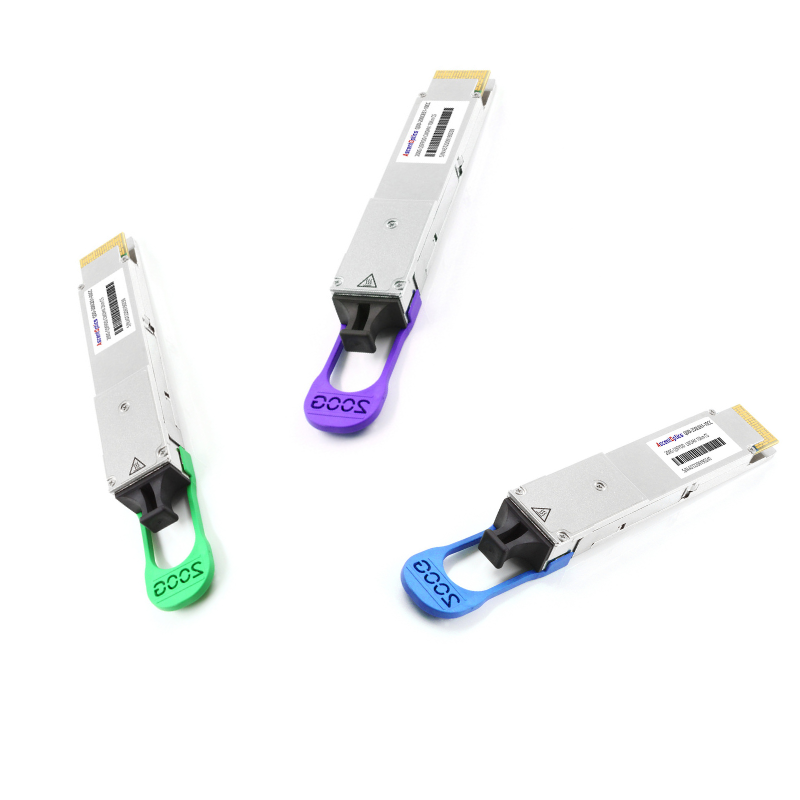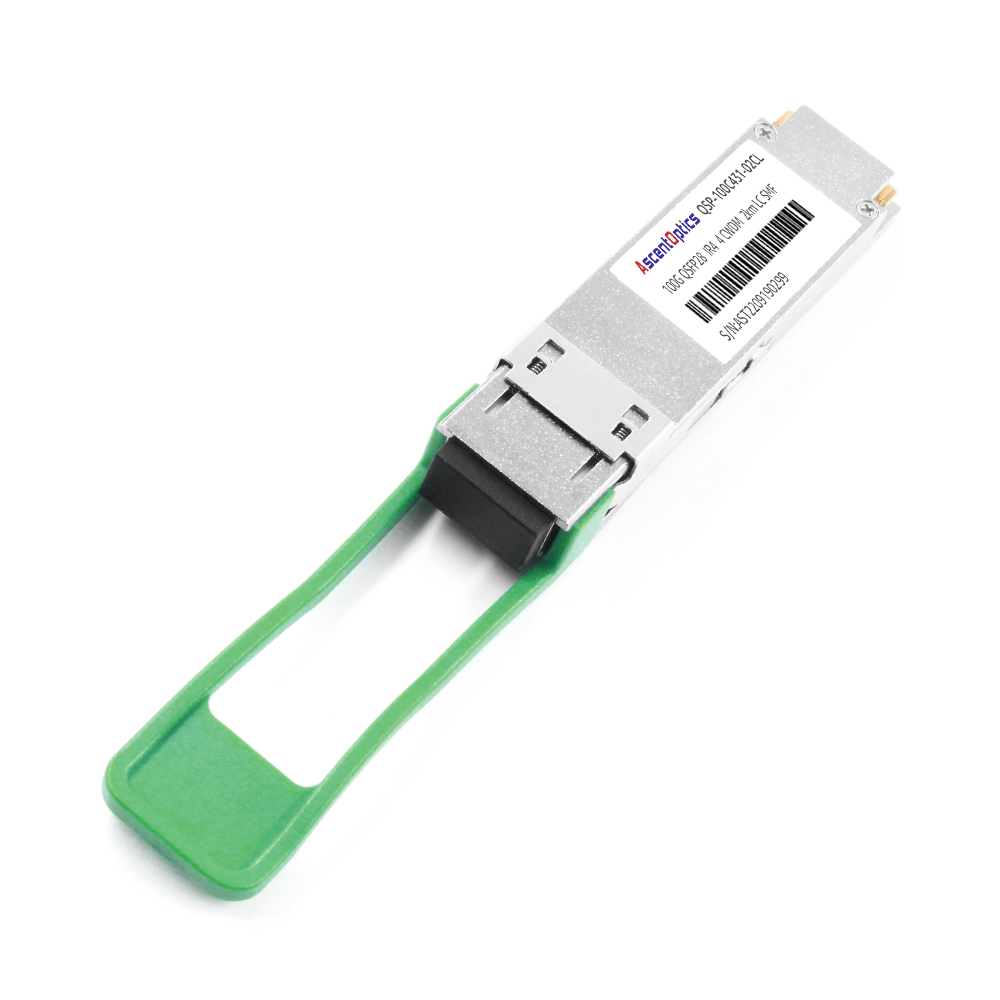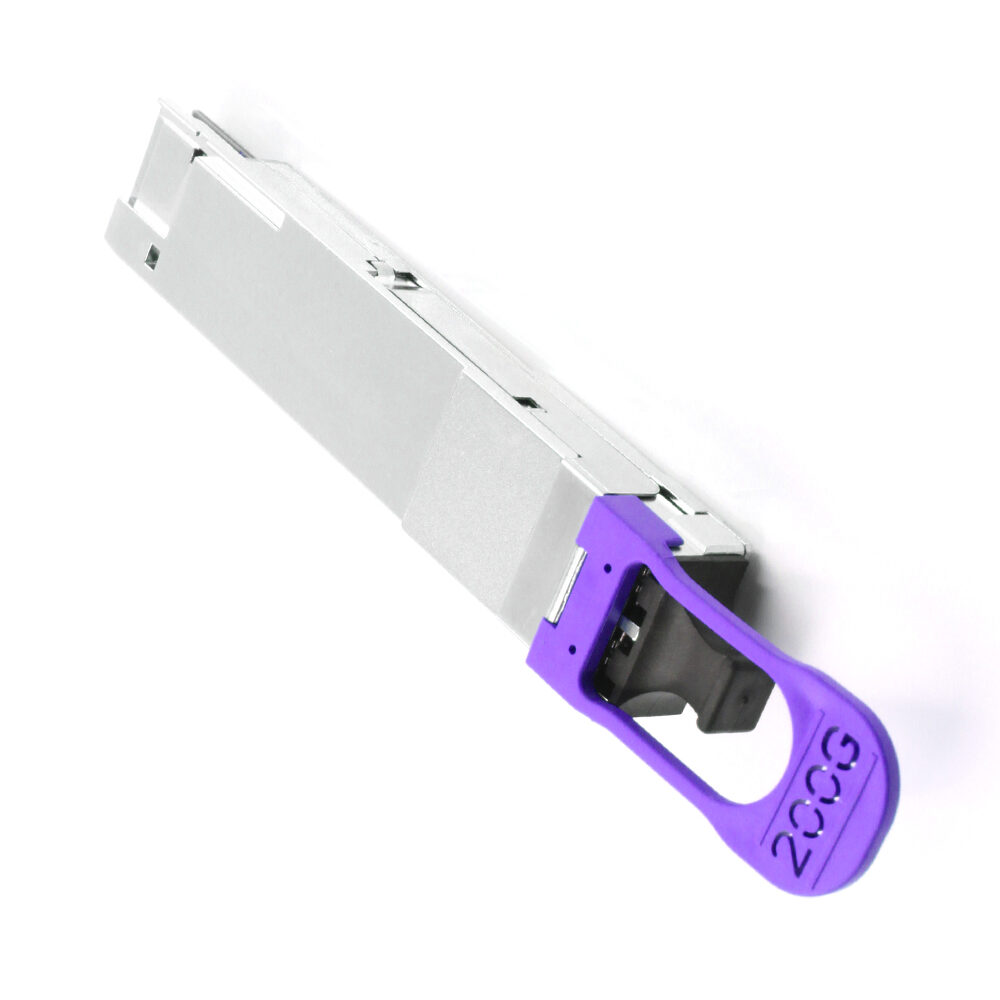In the case of dealing with networking equipment, the compatibility of transceiver modules is a very important factor which determines whether the devices will work properly or not. In particular, the case of the intertransceiver relationship of QSFP28 and QSFP-DD is of great interest to specialists. This article examines the degree of complementarity of these two types of transceivers, their design, operational principles and areas of application. The analysis of their efficiency opens the possibility for this guide to assist its audience with informed choices over how best to enhance their network infrastructure.

In terms of data rate, design, and support bandwidth, QSFP28 and QSFP-DD differ considerably from one another. Data transfers utilizing a QSFP-DD architecture can reach an astounding rate of up to 400 Gbps, while a QSFP28 is limited to merely 100 Gbps due to its noticeably lower bandwidth capacity. While QSFP-DD can support up to 400 Gbps by integrating eight 50 Gbps channels, QSFP28 can only integrate four 25 Gbps channels which are the equivalent of 100 Gbps. The core reason in the difference of channels comes from the capability of bandwidth support;
QSFP-DD prerequisites a far greater support than what QSFP28 does which is due to the fact that QSFP-DD quadruplicates the channel density of QSFP28 while still being backwards compatible. Because of this shift in channel density, greater capability of scaling is unlocked leading to QSFP-DD being a more enhanced option when compared with QSFP28 for data centers.
These features enable the use of QSFP-DD bandwidth applications with higher performance requirements, such as 400 gigabyte Ethernet. It is also backward compatible with existing QSFP28 slots in order to provide flexibility in the current architecture, while also being space-efficient for deployment in data center environments.
The integration and application of QSFP28 and QSFP-DD are fundamentally different because of the significant role that form factor plays. The physical size of QSFP-DD is still small enough to fit into QSFP28 slots supporting backwards compatibility. Data centers that require more bandwidth than what is currently available, can utilize QSFP-DD’s high efficiency design rather than having to tweak the rest of their setup. For instance, 400 Gbps ethernet can fit into boxed designed supporting 248 Gbps combining a QSFP-DD with a SFF-8639 connector which optimally increases channel and scaling density.
Power consumption is one of the main points in the strategic competition between QSFP-DD and QSFP28. In most of the cases and vendors, QSFP-DD Modules use in is between 7 to 12 watts, and once more varies greatly with design and Manufacturer. This is higher than the modules of QSFP28 which are averaged between 3.5 to 5 watts per module.
With the inclusion of more active components and circuitry to support higher data rates and increased lane density, the energy consumption of QSFP-DD modules increases. Regardless of this shortfall, QFSFP-DD’s power efficiency remains competitive, being quantified in watts per gigabit due to its capacity to handle scaling data rates.
Power requirements for the two devices, a 400 Gbps QSFP-DD and a 100 Gbps QSFP28 are approximately 0.0175-0.03 watts per Gbps and 0.035-0.05 watts per Gbps. What these two experiments reveal is that, while the absolute power requirement for QUAD SFP-DD modules is indeed higher, their efficiency is very suitable for high-performance applications. Knowing these power consumption peculiarities are necessary for the thermal design and energy budgeting of data center networks.

Multiple design elements enable backward compatibility between the QSFP-DD and QSFP28 modules. These design elements make certain that devices or units utilizing a QSFP-DD can operate with older QSFP28 modules. These elements are provided in detail below Mechanically Compatible Interfaces
The electrical interface in QSFP-DD modules includes the capacity of 4lane and 8lame modes, this guarantees compatibility with systems utilizing the same interface as QSFP28.
The dimensions of a connector port for a QSFP28 module is similar to that of a QSFPDD which allows modules of a QSFP28 to be inserted into a QSFPDD port without any mechanical restraints. The combination of a QSFPDD port with a passive built in component enables the QSFP28 modules to operate with low power requirements while still retaining efficiency.
Several software and firmware include QSFPDD modules while controlling soft systems that detect and enable such devices larger than a specific size while using a separate QSFP28 module that is required.
The broad compatibility of electrical connections by means of reliable signal connections across both module types ensure that the connector design for a QSFPDD is backward compliant with a QSFP28 module.
By implementing these characteristics, providers would be able to transition smoothly into higher bandwidth solutions and protect their investment in QSFP28 infrastructure while simultaneously incorporating the QSFPDD systems.
As is customary, the QSFP-DD connectors are retro-compatible with the QSFP28 modules, but this feature comes with its bellies. Achieving thermal performance along with physical compatibility can be a multifaceted task especially when the modules possess high speed power ratings which leads to a greater amount of heat being generated. This being said, cross signal integrity for data rates within the range of 1.2-25Gbps also have commercial constraints which subsequently lay out strict specifications for precise hardware and firmware design. All of these issues have to be tackled so that integration and humane testing can guarantee proper functionality for different hardware combinations.
To accomplish backward compatibility as an appliance, addressing the real-life constraints necessitated a focus on protocol normalizations and validation. Fundamental tactics include excessive hard testing of different sets of hardware configuration, common standards such as DDR and PCIe, and throwing in firmware upgrades to tackle backward compatibility issues. This combination, alongside the advocacy for technical norms makes interoperability possible making equipment that is supposedly incomprehensible in its operations to function flawlessly.
Yes, QSFP28 and QSFP-DD modules can coexist in data center environments. QSFP-DD modules are designed with backward compatibility, allowing existing QSFP+, QSFP28, and QSFP56 transceivers or connectors to be plugged into QSFP-DD ports. This means data centers can upgrade their network infrastructure gradually, without the need to replace all existing QSFP28 modules at once.
Moreover, the QSFP-DD form factor enables both QSFP28 and QSFP-DD modules to operate within the same system, offering greater flexibility and a smoother upgrade path. For example, a data center might first upgrade part of its equipment to QSFP-DD while continuing to use QSFP28 modules in other areas, achieving a balance between transition smoothness and cost efficiency.
However, care should be taken to ensure that the use of QSFP28 modules in QSFP-DD ports does not exceed the bandwidth limitations of the QSFP28 specification. Additionally, since these modules consume power, proper cooling must be ensured. Following a well-defined migration strategy and ensuring all devices comply with MSA (Multi-Source Agreement) standards will help support the parallel deployment of both module types within the data center infrastructure.

When selecting an optical transceiver form factor, in addition to QSFP28 and QSFP-DD, OSFP and QSFP56 are also commonly used options. These form factors differ significantly in terms of physical size, power consumption, compatibility, and scalability.
Starting with physical dimensions, OSFP modules are larger than QSFP28 and QSFP-DD. While this increased size results in higher power consumption, it also allows for better thermal performance, making OSFP an ideal choice for deploying 400G and higher-speed networks—particularly in high-density and high-power environments. However, OSFP modules are not backward compatible with QSFP28 or QSFP56 slots, meaning their deployment typically requires substantial infrastructure upgrades.

In comparison, QSFP-DD maintains the same physical dimensions as QSFP28 but adds a second row of electrical contacts to the connector, enabling an expansion from 4 lanes to 8 lanes. This allows the data transmission rate to increase from 100G to 400G. Most importantly, QSFP-DD modules are backward compatible with QSFP28 and QSFP56, allowing users to upgrade their networks smoothly without replacing existing equipment. This feature gives QSFP-DD a significant advantage in terms of cost control and network evolution strategies.
QSFP56 is a technical enhancement of QSFP28, supporting 4 × 50 Gbps lanes, effectively doubling the total bandwidth to 200 Gbps. It retains the same form factor and interface standard as QSFP28, enabling bandwidth upgrades while maintaining compatibility. As such, it is considered a gradual upgrade path—particularly suitable for users with limited budgets who still seek improved performance.
Overall, QSFP-DD is currently the most flexible 400G optical module solution, offering high performance and backward compatibility within a compact form factor. In contrast, while OSFP lacks backward compatibility, its superior thermal management and bandwidth scalability make it better suited for future-oriented, high-performance network deployments.
Therefore, when selecting optical transceivers, it is essential to evaluate both the current state of the network and future development plans. If the goal is seamless compatibility with existing equipment and cost control, QSFP-DD is the preferred choice. However, if the objective is to build a next-generation, high-density data center architecture, OSFP offers a more forward-looking solution.

A: RES – Literal Translation: The differences in data rates and transceivers types mainly differentiate the two types of devices. According to popular use, QSFP-DD also known as Quad Small Form Factor Pluggable Double Density has a data transfer bandwidth of up to 400 G which is suitable for high data transfer applications. On the other hand it is common to find QSFP28 data transfer rate at 100 G when using 4x25G lanes. Due to this the design standard for QSFP-DD performs better in terms of port density than its counterpart QSFP28.
A: In terms of features and specifications both OSFP and QSFP-DD were designed to work with 400G data transfer speeds. What I have inhibited thus far is that although QSFP-DD transceivers are costlier due to their compact size and high port density they offer, OSFP tends to be bigger and offers higher power sending caps which is convenient for longer distance calling. At the end of the day it all comes down to the sort of set up one is using and what types of hardware and components are therein.
A: Yet again, the answer lies in the physical structure of the module – ports are welcome to be changed in the lower range of -2.0mm to -1.0 which renders us able to fit QSFP28 into a QSFP-DD. Naturally it implies that these devices are compatible and are able to interlink to provide flexibility. Once again network scalability made easy.
A: The support of distributed type networks, which are more complicated, is coupled with the increased port density and the higher data rate support of up to 400G. These make the QSFP-DDs highly suitable for deployment in data centers and applications that require a high throughput.
A: QSFP-DD which means Quad Small Form Factor Pluggable Double Density has a form factor that supports twice the density of the standard QSFP28 form factor. This means that QSFP-DD can have more data lanes which will enable higher data rates and increased port density without greatly increasing the form factor of the module.
A: The QSFP-DD MSA (Multi-Source Agreement) is a joint industry initiative aimed to set the criteria and parameters for the QSFP-DD transceiver standards. MSA guarantees interoperability between device manufacturers and all other companies, thus enhancing the readiness of the QSFP-DD technology into the networking devices deployment.
A: The QSFP-DD SR8 is a subclass of the QSFP-DD SR transceivers and this one is considering as a short rage fiber which is one of the SR technology used in octal fiber pairs operating at 400G data rates. It is intended to target short range applications within the data centers by providing high throughput within multimode fibre.
A: A network engineer may consider purchasing QSFP28 devices instead of the QSFP-DD transceivers under conditions where the network does not demand such data rates that only use of QSFP-DD can suffice or cost is the major factor. QSFP28 is good for32 rationalist 100G networks as well as networks with lower bandwidth requirements, it is more cost-effective at times.